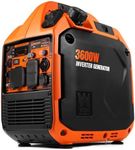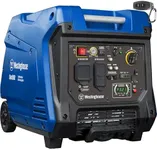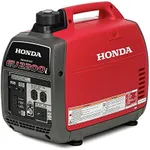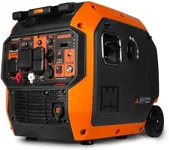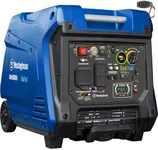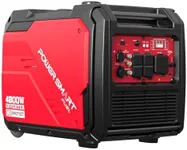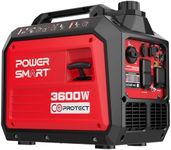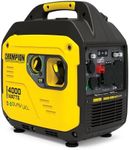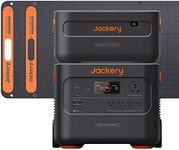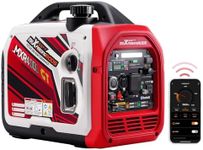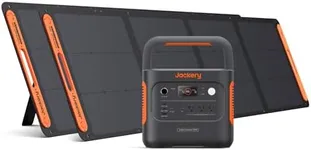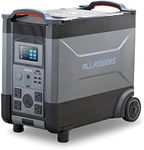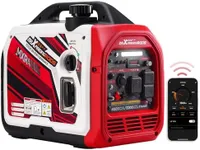Buying Guide for the Best Rv Inverter Generators
Choosing the right RV inverter generator can significantly enhance your camping experience by providing reliable and efficient power for your appliances and devices. Inverter generators are known for their quiet operation, fuel efficiency, and ability to produce clean power, making them ideal for sensitive electronics. To make an informed decision, it's important to understand the key specifications and how they align with your needs.Power Output (Wattage)Power output, measured in watts, indicates how much electricity the generator can produce. This is crucial because it determines what appliances and devices you can run simultaneously. Generators typically range from 1,000 to 4,000 watts. For light use, such as charging phones and running small appliances, a generator with 1,000 to 2,000 watts is sufficient. For more demanding needs, like running an air conditioner or multiple appliances, you may need 3,000 to 4,000 watts. Assess your power needs by listing the wattage requirements of the devices you plan to use.
Noise LevelNoise level, measured in decibels (dB), indicates how loud the generator will be during operation. This is important for maintaining a peaceful environment, especially in campgrounds with noise restrictions. Inverter generators are generally quieter than traditional generators, with noise levels ranging from 50 to 70 dB. For a quieter experience, look for generators with noise levels below 60 dB. Consider where and when you'll be using the generator to determine the acceptable noise level for your situation.
Fuel Efficiency and RuntimeFuel efficiency and runtime indicate how long the generator can run on a full tank of fuel. This is important for convenience and cost-effectiveness, especially during extended use. Inverter generators are known for their fuel efficiency, with runtimes ranging from 6 to 20 hours depending on the load and fuel tank size. For longer trips or continuous use, choose a generator with a longer runtime. Consider your typical usage patterns and how often you'll be able to refuel.
PortabilityPortability refers to the ease of transporting the generator, which is important for RV users who need to move the generator frequently. This is determined by the generator's weight and design features like handles and wheels. Inverter generators are generally lighter and more compact than traditional generators, with weights ranging from 30 to 100 pounds. For easier transport, look for models with built-in handles or wheels. Consider your physical ability to move the generator and how often you'll need to transport it.
Parallel CapabilityParallel capability allows you to connect two inverter generators to double the power output. This is useful if you need more power than a single generator can provide but still want the benefits of inverter technology. Not all generators have this feature, so if you anticipate needing more power in the future, choose a model with parallel capability. Consider your current and future power needs to determine if this feature is necessary for you.
Clean Power (THD)Clean power, measured by Total Harmonic Distortion (THD), indicates the quality of the electricity produced. This is important for sensitive electronics like laptops and smartphones, which require stable and clean power to operate safely. Inverter generators typically produce power with less than 3% THD, making them safe for all electronics. If you plan to power sensitive devices, ensure the generator produces clean power with low THD. Consider the types of devices you'll be using and their sensitivity to power quality.
